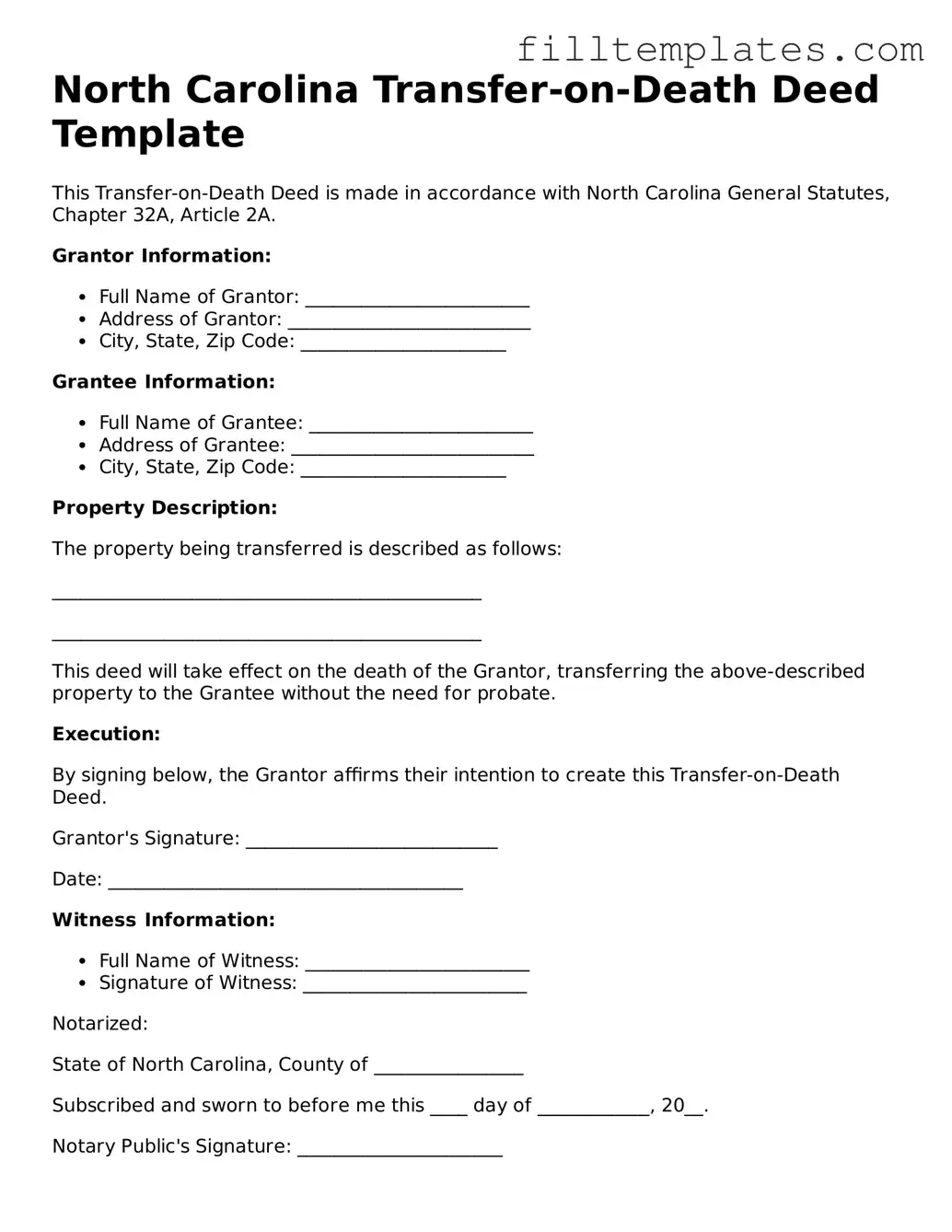North Carolina Transfer-on-Death Deed Template
This Transfer-on-Death Deed is made in accordance with North Carolina General Statutes, Chapter 32A, Article 2A.
Grantor Information:
- Full Name of Grantor: ________________________
- Address of Grantor: __________________________
- City, State, Zip Code: ______________________
Grantee Information:
- Full Name of Grantee: ________________________
- Address of Grantee: __________________________
- City, State, Zip Code: ______________________
Property Description:
The property being transferred is described as follows:
______________________________________________
______________________________________________
This deed will take effect on the death of the Grantor, transferring the above-described property to the Grantee without the need for probate.
Execution:
By signing below, the Grantor affirms their intention to create this Transfer-on-Death Deed.
Grantor's Signature: ___________________________
Date: ______________________________________
Witness Information:
- Full Name of Witness: ________________________
- Signature of Witness: ________________________
Notarized:
State of North Carolina, County of ________________
Subscribed and sworn to before me this ____ day of ____________, 20__.
Notary Public's Signature: ______________________
My Commission Expires: _______________________
